Abstract
We report experiments to quantify the relationships between the relative abundance of ureide-N in root-bleeding sap, vacuum-extracted sap, and hot water extracts of stems and petioles of nodulated soybean (Glycine max [L.] Merrill cv Bragg) and the proportion of plant N derived from nitrogen fixation. Additional experiments examined the effects of plant genotype and strain of rhizobia on these relationships. In each of the five experiments reported, plants of cv Bragg (experiment 1), cv Lincoln (experiments 3, 4, 5), or six cultivars/genotypes (experiment 2) were grown in a sand:vermiculite mixture in large pots in a naturally lit, temperature-controlled glasshouse during summer. Pots were inoculated at sowing with effective Bradyrhizobium japonicum CB1809 (USDA 136) or with one of 21 different strains of rhizobia. The proportions of plant N derived from nitrogen fixation were determined using 15N dilution. In one experiment with CB1809, plants were supplied throughout growth with either N-free nutrients or with nutrients supplemented with 1, 2, 4, or 8 millimolar 15N-nitrate and harvested on eight occasions between V6 and R7 for root-bleeding sap, vacuum-extracted sap, stems (including petioles), and whole plant dry matter. Analyses of the saps and stem extracts for ureides (allantoin plus allantoic acid), α-amino-N, and nitrate, and of dry matter for N and 15N, indicated a positive effect of nitrate supply on concentrations of nitrate in saps and extracts and a negative effect on ureides and on the proportion of plant N derived from nitrogen fixation. The relative abundance of ureide-N in root-bleeding sap, vacuum-extracted sap (100 [ureide-N]/[ureide-N+ α-amino-N + nitrate-N]) and stem extracts (100 [ureide-N]/[ureide-N + nitrate-N]) and the proportion of plant N, derived from nitrogen fixation between successive samplings were highly correlated (r = 0.97-1.00). For each variable, two standard curves were prepared to account for the shifts in the compositions of N solutes of xylem saps and extracts after flowering which were not related to a change in nitrogen fixation. Relationships between relative ureide-N and the proportion of plant N derived from nitrogen fixation were not affected by plant genotype or by strain of rhizobia. Therefore, assessment of nitrogen fixation by soybean using the ureide technique should now be possible with the standard curves presented, irrespective of genotype or strain of rhizobia occupying the nodules.
Full text
PDF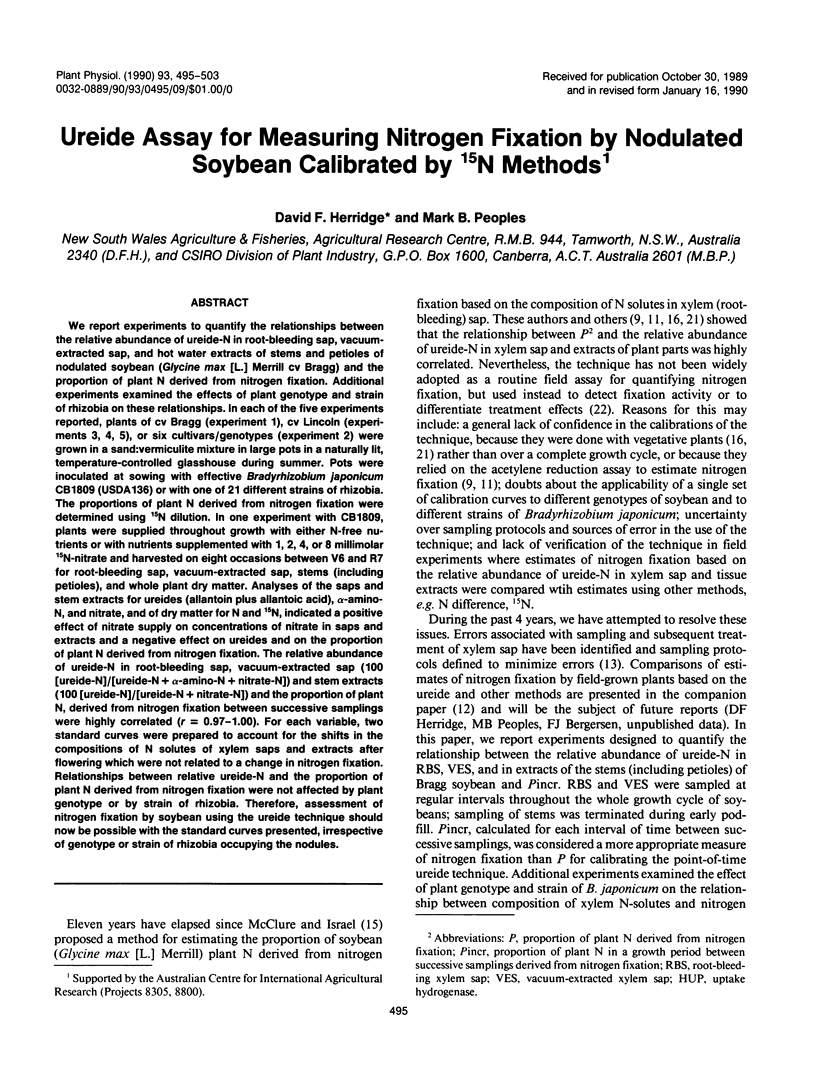
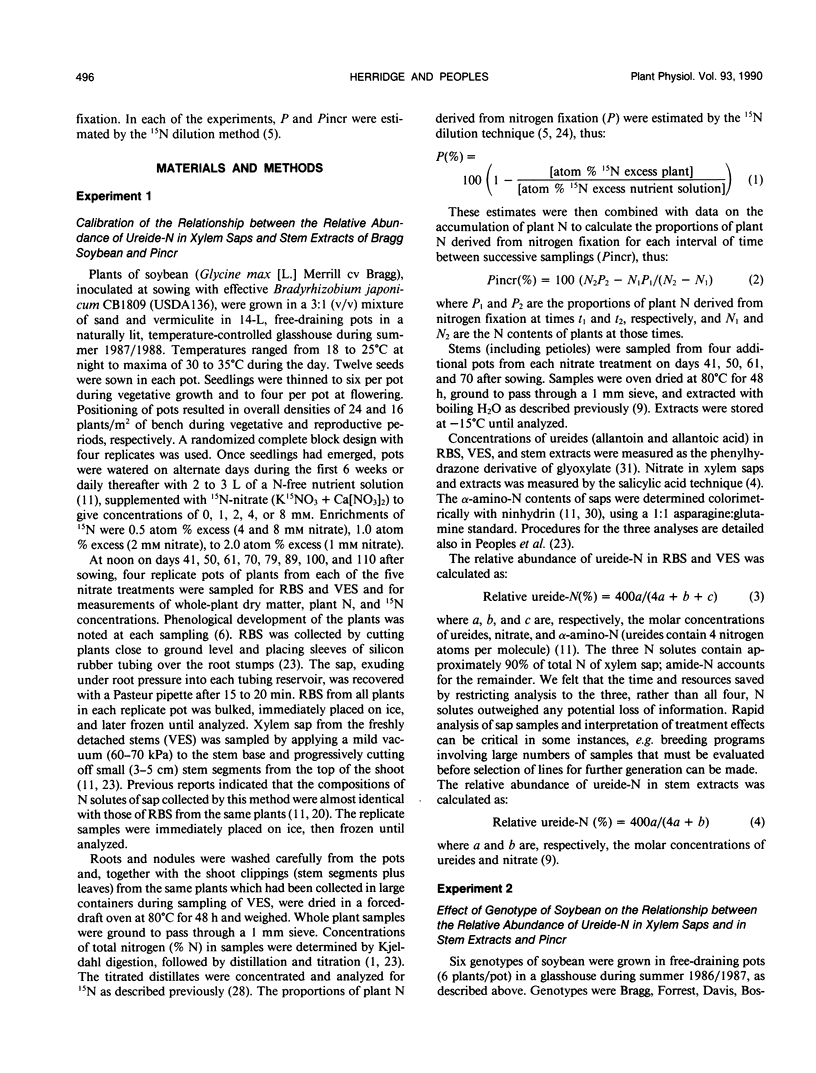
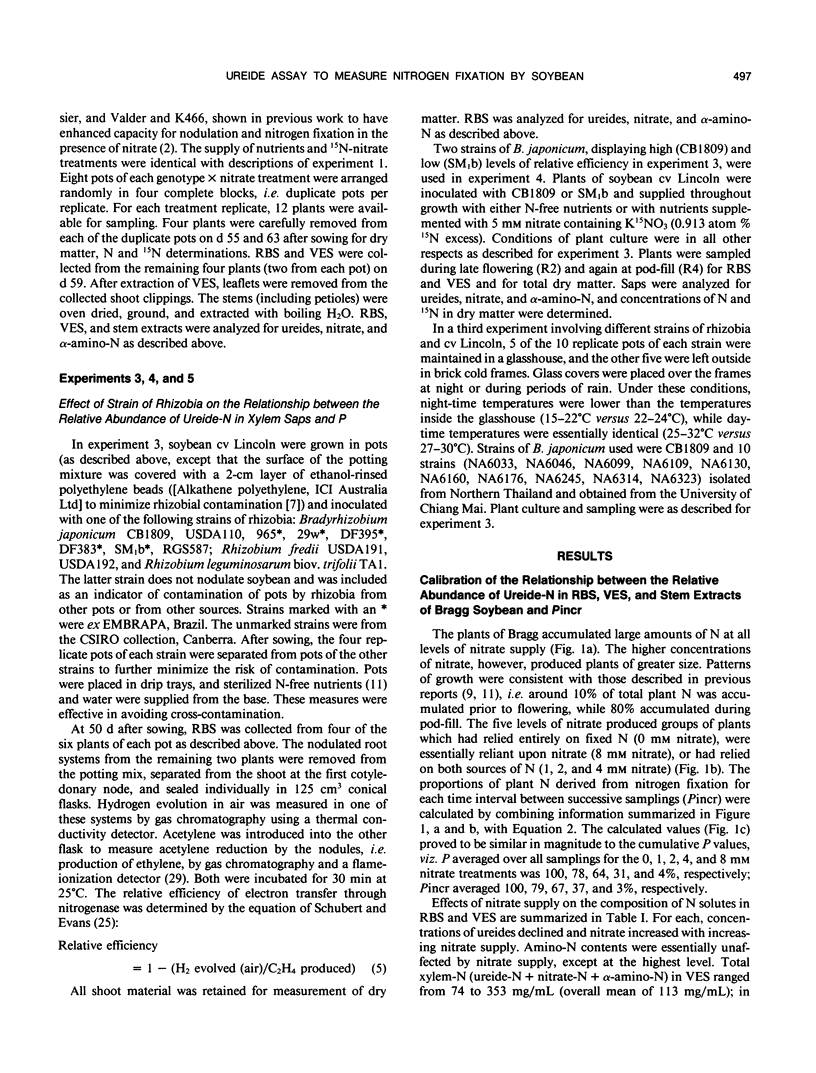
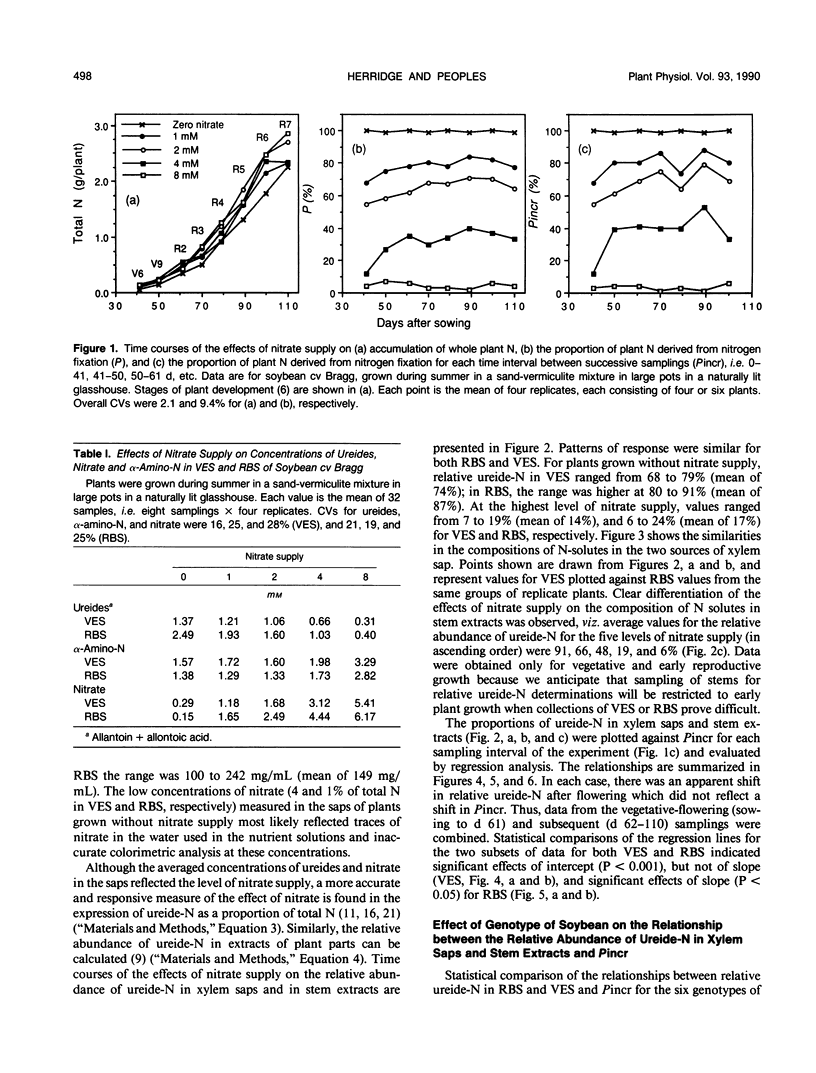
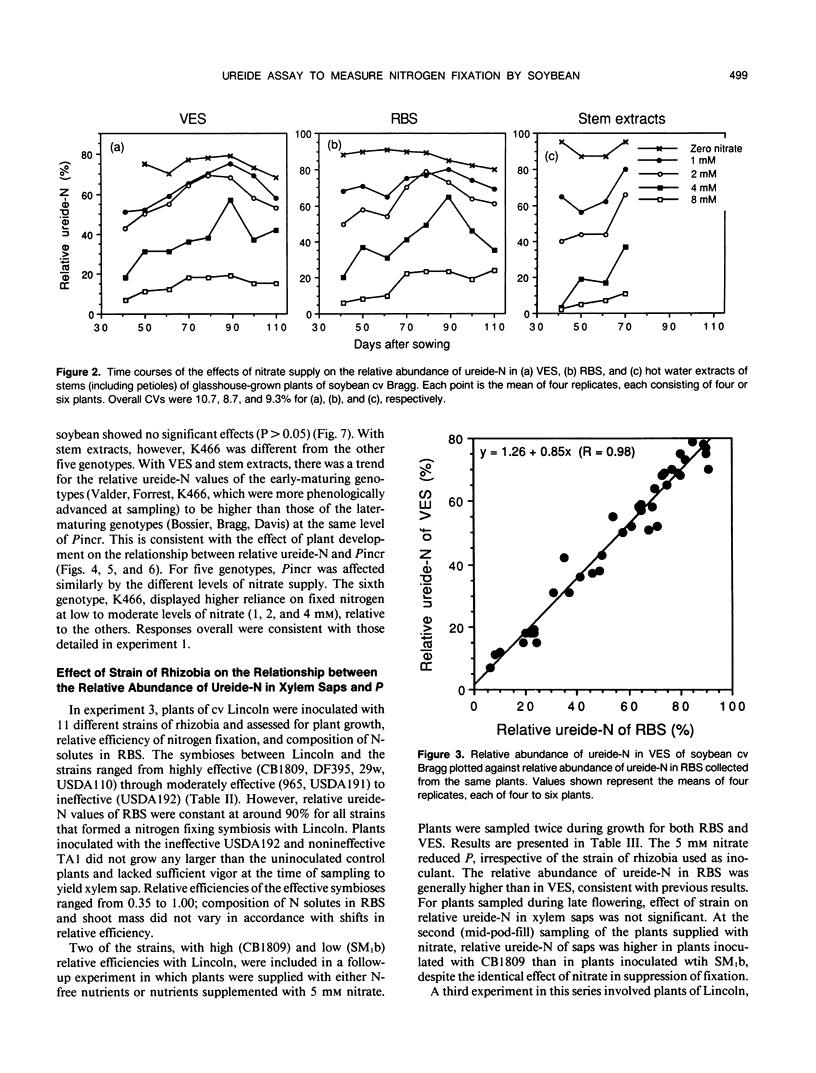
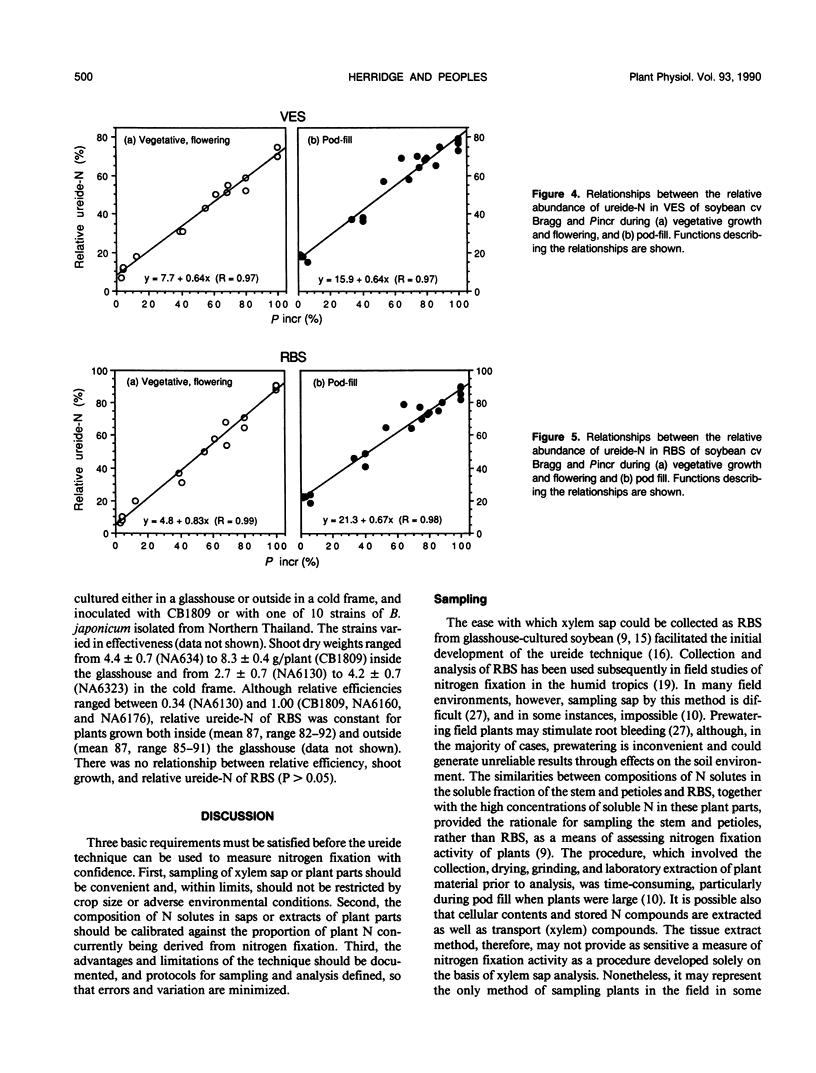
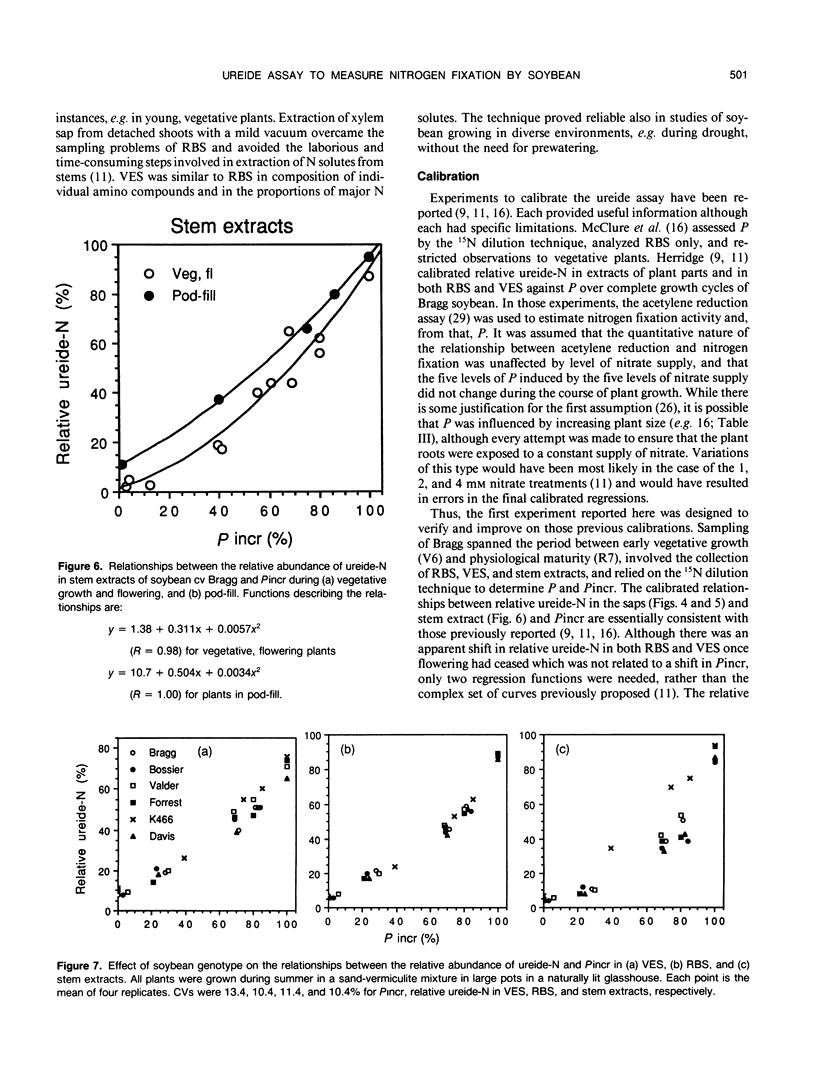
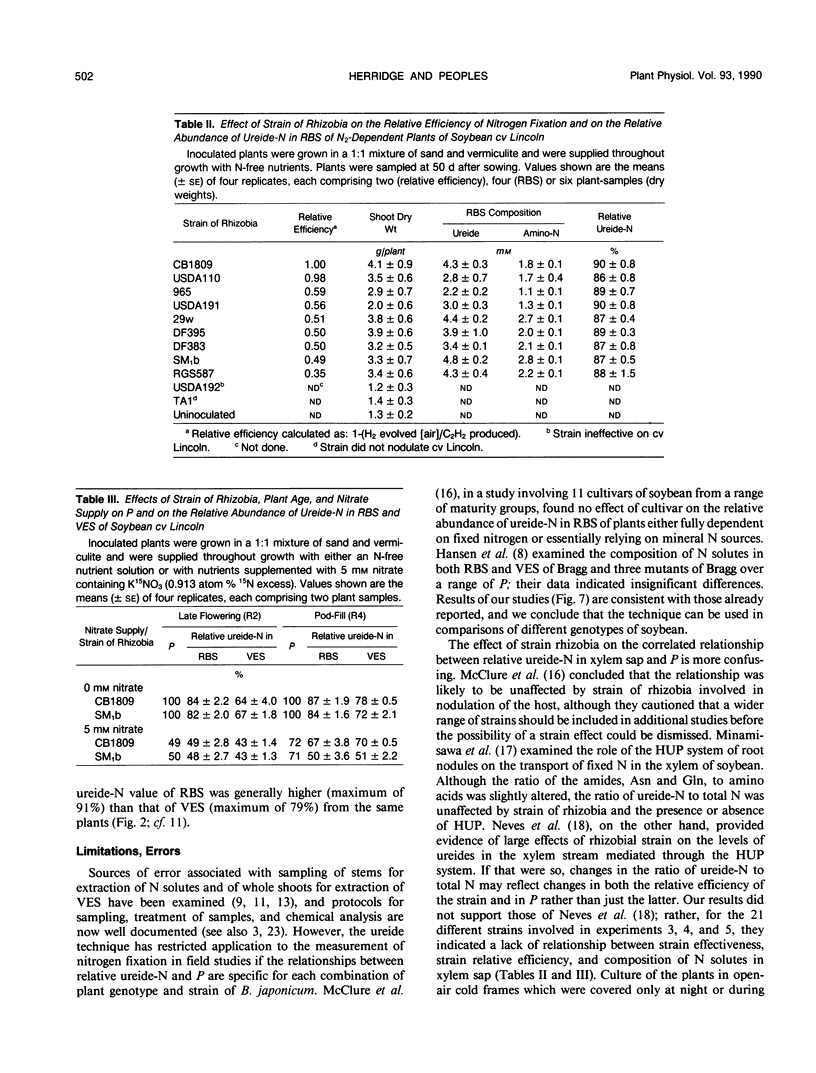
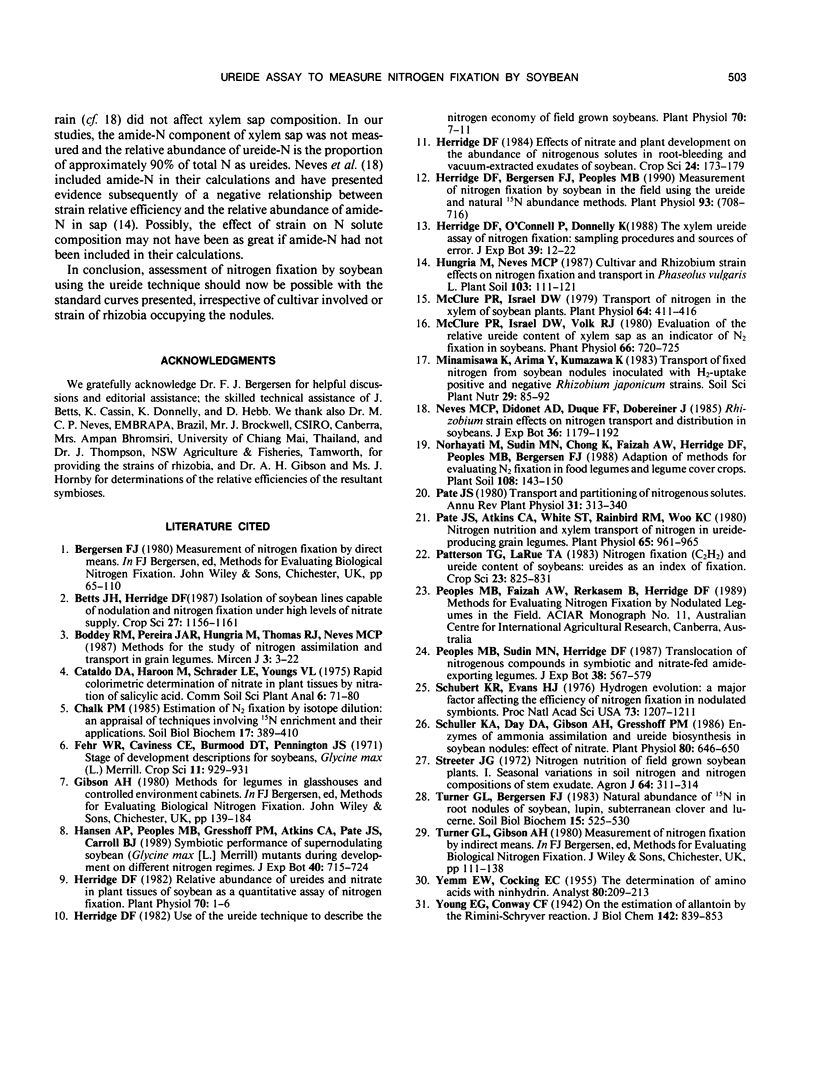
Selected References
These references are in PubMed. This may not be the complete list of references from this article.
- Herridge D. F., Bergersen F. J., Peoples M. B. Measurement of nitrogen fixation by soybean in the field using the ureide and natural N abundance methods. Plant Physiol. 1990 Jun;93(2):708–716. doi: 10.1104/pp.93.2.708. [DOI] [PMC free article] [PubMed] [Google Scholar]
- Herridge D. F. Relative abundance of ureides and nitrate in plant tissues of soybean as a quantitative assay of nitrogen fixation. Plant Physiol. 1982 Jul;70(1):1–6. doi: 10.1104/pp.70.1.1. [DOI] [PMC free article] [PubMed] [Google Scholar]
- Herridge D. F. Use of the ureide technique to describe the nitrogen economy of field-grown soybeans. Plant Physiol. 1982 Jul;70(1):7–11. doi: 10.1104/pp.70.1.7. [DOI] [PMC free article] [PubMed] [Google Scholar]
- McClure P. R., Israel D. W. Transport of nitrogen in the xylem of soybean plants. Plant Physiol. 1979 Sep;64(3):411–416. doi: 10.1104/pp.64.3.411. [DOI] [PMC free article] [PubMed] [Google Scholar]
- McClure P. R., Israel D. W., Volk R. J. Evaluation of the Relative Ureide Content of Xylem Sap as an Indicator of N(2) Fixation in Soybeans: GREENHOUSE STUDIES. Plant Physiol. 1980 Oct;66(4):720–725. doi: 10.1104/pp.66.4.720. [DOI] [PMC free article] [PubMed] [Google Scholar]
- Pate J. S., Atkins C. A., White S. T., Rainbird R. M., Woo K. C. Nitrogen Nutrition and Xylem Transport of Nitrogen in Ureide-producing Grain Legumes. Plant Physiol. 1980 May;65(5):961–965. doi: 10.1104/pp.65.5.961. [DOI] [PMC free article] [PubMed] [Google Scholar]
- Schubert K. R., Evans H. J. Hydrogen evolution: A major factor affecting the efficiency of nitrogen fixation in nodulated symbionts. Proc Natl Acad Sci U S A. 1976 Apr;73(4):1207–1211. doi: 10.1073/pnas.73.4.1207. [DOI] [PMC free article] [PubMed] [Google Scholar]
- Schuller K. A., Day D. A., Gibson A. H., Gresshoff P. M. Enzymes of ammonia assimilation and ureide biosynthesis in soybean nodules: effect of nitrate. Plant Physiol. 1986 Mar;80(3):646–650. doi: 10.1104/pp.80.3.646. [DOI] [PMC free article] [PubMed] [Google Scholar]


